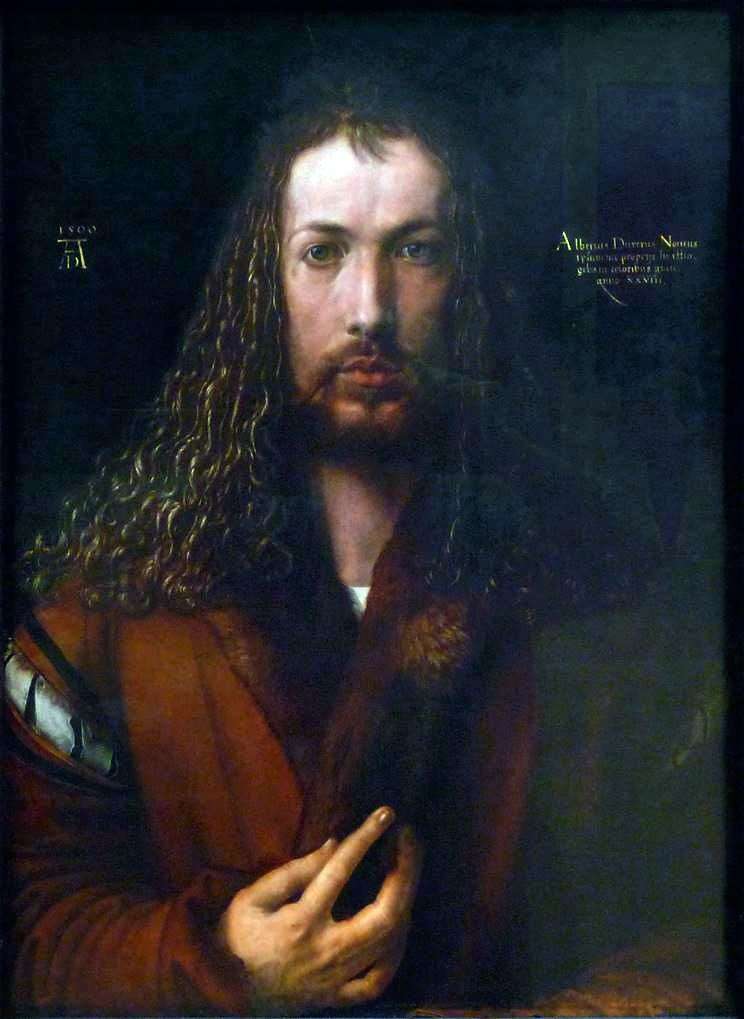
The mystery of the classical ideal of the human figure does not give Dureru rest. He dedicated work on mastering it for many years, subsequently summarizing in the three known “Books of Proportions”, over which he worked since 1515 for more than ten years.
The first imaginative embodiment of these searches is the famous self-portrait of 1500, one of the artist’s most significant works, which marks his full creative maturity. From this portrait all the elements of naive narrative disappear; it does not contain any attributes, details of the situation, nothing incidental, distracting the viewer’s attention from the image of the person. In a neutral background, a human half-figure directly turned into a facet is clearly visible, subordinate to the shape of a triangle.
The image is based on the desire to generalize the image, order, external and internal balance; The individual image is subordinated to a preconceived ideal representation.
However, Dürer’s greatest creative honesty and never changing his sincerity make him bring in this image a tinge of anxiety and anxiety. The slight fold between the eyebrows, concentration and emphasized seriousness of expression give the person a touch of subtle sadness. The full dynamics of the fractured curly locks of hair that surround the face are restless; thin expressive fingers of fingers as though nervously move, fingering fur collar.
